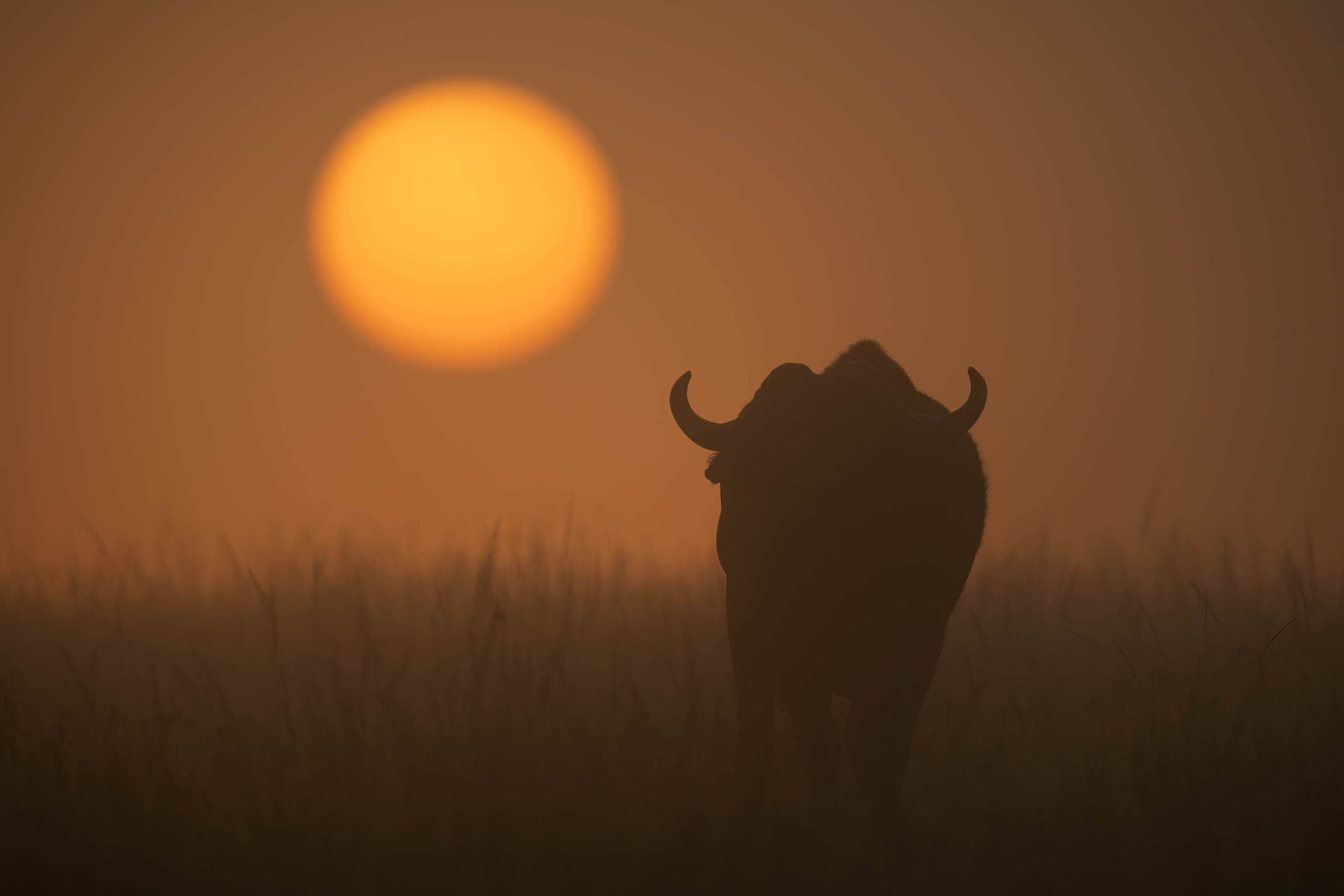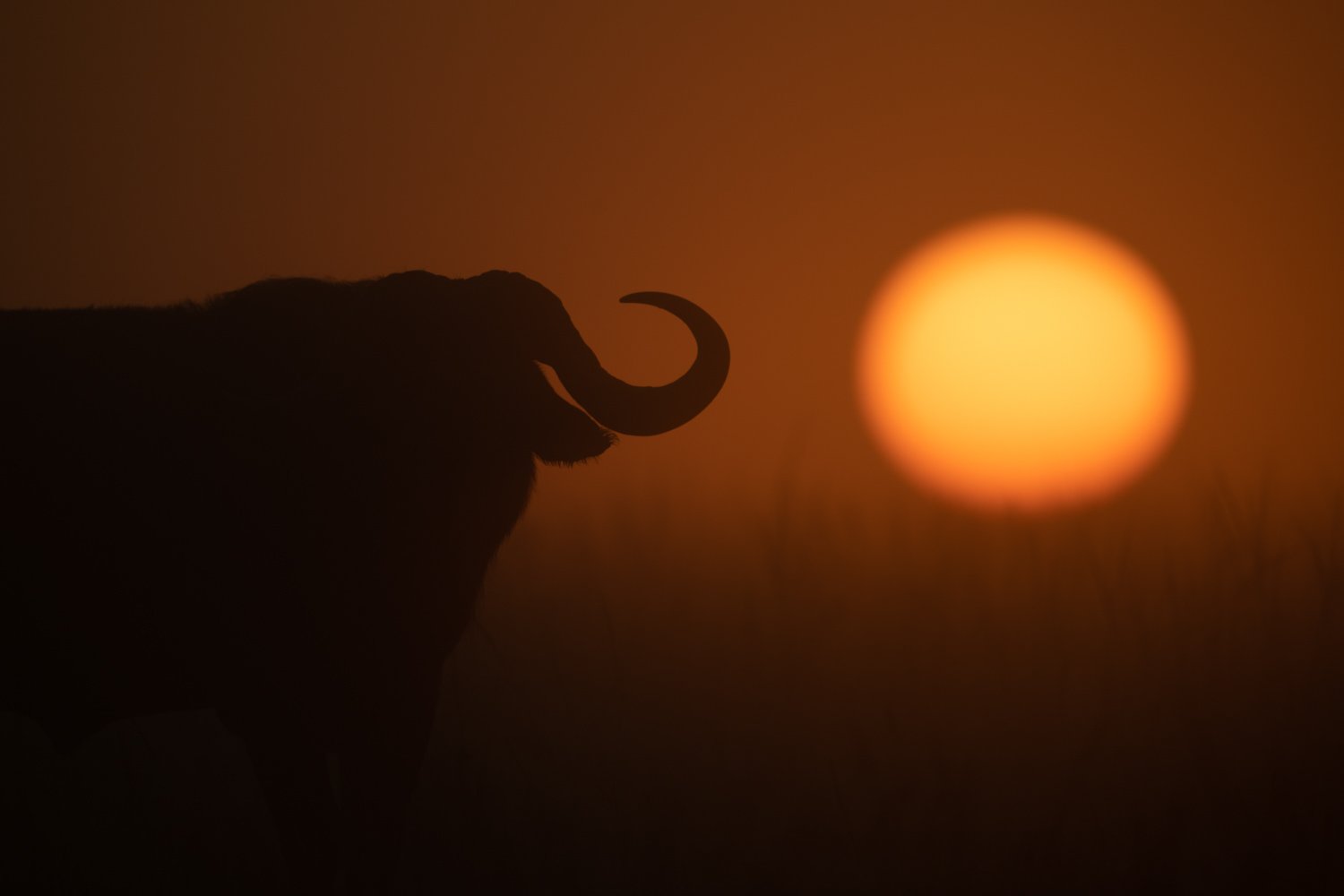How to Shoot in Bad Weather
Bad weather means good photos…!
Misty Morning
In the words of Alfred Wainwright, “There's no such thing as bad weather, only unsuitable clothing.” Well, in photography terms, it’s not the clothing that’s the problem but the type of shot. Here’s a quick guide to the right types of shots in different kinds of weather.
Sunshine
Sunshine is great if it’s just after dawn or just before sunset during the golden hour. The light is soft and warm, and the angle of the sun means it’s easy to capture long shadows and sidelit and backlit shots, including silhouettes.
However, during the middle of the day, sunshine can become very bright and harsh, creating unsightly shadows and making it almost impossible to take slow pans. So what can you do?
Well, if you’re on safari in Africa, you could just give up and stick to the morning and evening game drives. The length of the drives varies by camp, but very few people go out all day from dawn until dusk. There’s usually a break for lunch when the light is at its harshest, and that’s quite understandable.
However, the problem is that you never know what you might’ve seen if you were out in the bush rather than in the mess tent! I once saw four male lions take down a buffalo in the Serengeti at about midday, and it’s one of the most cherished memories I have of Africa. Lunch would’ve had to be pretty special to make up for missing that…!
One option for the middle of the day is to try to take action shots. The light is far less important than the activity of the animals, so you could follow the big cats and hope they’ll start hunting or look out for birds perched on dead trees and wait for them to take off.
Another option is to make a virtue of necessity and convert your shots to black and white. Monochrome tends to emphasise contrast, shape and texture rather than colour (obviously), so shadows are a feature, not a bug!
"Does my trunk look big in this...?"
Cloud
It’s often said that photographers like overcast conditions because they remove any chance of unsightly shadows and allow you to shoot from any angle. Well, I do see the point of that argument, but it only really works during the middle of the day. At sunrise and sunset, it’s always hugely disappointing not to have a clear sky and the chance of wonderfully warm, golden light. Having said that, a few clouds here and there do make sunset shots a lot better.
I’ve spent a few weeks in Botswana, where you tend to get perfect blue skies during both the green season and the dry season. They’re great for creating a kind of minimalist simplicity in colour photos, but they can start to look rather boring!
If you visit somewhere like the Masai Mara in Kenya, you’re more likely to get dramatic cloud formations that make the perfect backdrop for an environmental portrait. It might be an animal on the horizon or a shot of an elephant taken at close range with a wide-angle lens. Either way, the clouds become part of the composition, and you can maximise their impact in black and white.
It works especially well if your subject is an elephant or a buffalo because their coats are grey and black anyway, so you’re not missing out on the lovely warmth you might get from a colour image of a lion, leopard or cheetah.
Clouds also reduce the light levels, so this is a good time to try slow pans. In Africa, at least, it can be almost impossible to avoid overexposure in bright sunshine—even if you use the lowest possible ISO in the extended range (50 or 32) and use shutter priority mode. The aperture quickly rises to the maximum allowed by the lens (normally around f/22-f/36), and there’s no way left for the camera to reduce the exposure.
In cloudy conditions, though, you shouldn’ve have a problem with the light levels, so you can experiment with very slow shutter speeds. I once slow-panned an elephant at 1/4 of a second!
Walk in the Park
Fog
Fog and mist can transform your photos. They effectively do the job of a wide aperture by reducing the depth of field and making your subject loom into view out of a blurry background. This works especially well with silhouettes.
On my last trip to the Masai Mara, the weather was miserable for almost the entire 10 days, but I had one glorious, foggy sunrise that made it all worthwhile. The only problem was finding the animals! Once I’d stumbled across a couple of buffalos, though, I could snap away to my heart’s content…
Rain
Not many people like going out in bad weather, and in Africa game drives are often cancelled due to the rain. I was once at Klein’s Camp in Tanzania. I was going on a morning game drive, but my guide noticed a few spots of rain as he drove down the track from the lodge. He stopped the vehicle, did a three-point turn and said something like, “Well, we’d better head back…” Pretty soon, I was having breakfast back at camp!
However, the big advantage of the rain is that it gives you access to shots you’d never be able to take otherwise. If there’s standing water, you might see animals drinking from the puddles or cubs jumping over them. If it’s actually raining, you can take shots of the wildlife looking suitably bedraggled, with water dripping from their noses and whiskers.
Slippery When Wet
One thing to bear in mind is your shutter speed. If it’s raining, you’ll probably have less light to work with, so you might have to slow your shutter speed down a bit anyway. However, something like 1/60 of a second can be great if you want to show the raindrops as blurred streaks rather than dots.
The other thing to think about is your aperture. Wildlife photographers normally shoot wide open for a variety of reasons, but this is one occasion when a narrower aperture works well. The increased depth of field combined with the long streaks of rain means you can give the impression that the animals are hemmed in by diagonal grey lines.
Snow
I’ve been to Antarctica a couple of times, and the weather has often been dreadful. On board ship, I’ve experienced Force 9 gales with waves up to 60 feet high—making it impossible to sleep even though I thankfully don’t get seasick!
On land, I’ve been caught in a blizzard with a howling wind that was so strong that I couldn’t even turn round! It would’ve been impossible to see, and my lens hood would’ve filled up with snow…
However, the upside is that, again, I managed to get shots that I never would’ve been able to in good weather. Snow tends to turn into a lovely white blur, emphasising the harshness of the conditions. You just need to add a stop or two of positive exposure compensation to make sure it stays white rather than turning a dull grey!
Wind
A gentle breeze doesn’t make much of a difference to your photography—although it might come as welcome relief if you’re suffering under a blazing sun in India! I once went on a tiger safari when the temperature reached 117° F (47° C), and the only saving grace was that we were driving around most of the time, so the breeze that created helped cool us all down.
If the wind is a little stronger, you can use the knowledge of wind direction to help you with certain types of shot. Birds take off and land into the wind, for instance, so it’s worth bearing that in mind when you’re setting up. You generally want the wind behind you so that the bird flies towards you, showing you its face rather than its tail feathers.
Wing Forward
I also think male lions look good when they stand facing into the wind. The wind blows their manes back, and you can make them look very powerful, even regal.
Verdict
Wildlife photographer Mark Carwardine once said that photographs only have three elements: the subject, the background and the light. However, he forgot the weather! Rain, snow, sleet, hail, clouds, fog and even bright sunshine can give you opportunities to take great shots that you’d never get otherwise, so you should make the most of them!
If you’d like to order a framed print of one of my wildlife photographs, please visit the Prints page.
If you’d like to book a lesson or order an online photography course, please visit my Lessons and Courses pages.







